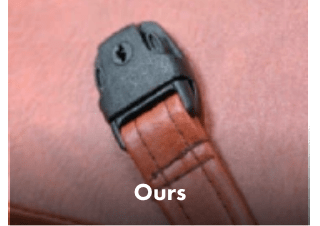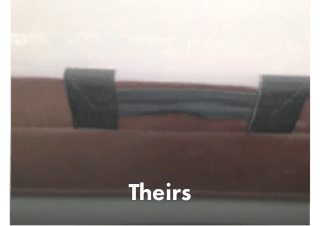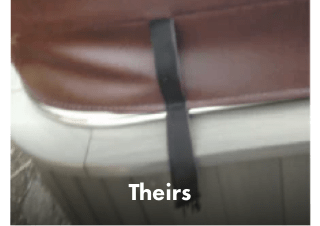Bromine vs Chlorine: The Difference
When choosing between bromine and chlorine for a spa or hot tub, understanding their differences proves essential. Each sanitizer has unique properties that affect cost, effectiveness, and shelf life. Chlorine tablets are generally cheaper but lose potency over time; meanwhile, bromine offers consistent performance despite higher costs.
Selecting the right option involves considering these factors to ensure optimal water treatment for your specific needs. This guide explores how each chemical works and helps in making an informed decision tailored to spa maintenance requirements.
Effectiveness in Different Temperatures
Chlorine's effectiveness decreases in high temperatures, especially above 100 degrees where it releases gas. Conversely, bromine remains stable even at higher temperatures.
Comparing Costs of Each Option
Comparing costs of bromine and chlorine reveals that 1" trichlor tablets are about 20% cheaper than bromine. Moreover, bulk buying 3" trichlor tablets makes them over 40% less expensive compared to their bromine counterparts. While both options incur different long-term expenses due to shelf life; chlorine tends to lose half its efficacy after a year under certain storage conditions.
In addition, cost differences also appear in types of pool shock treatments: cal-hypo or dichlor shocks (chlorinated) are more affordable than non-chlorine alternatives used with bromides for reactivation processes. Keep these figures in mind when budgeting for maintaining your spa’s water quality.
Health and Safety Concerns
Health and safety concerns are vital when choosing between bromine and chlorine for pool maintenance. Chlorine can cause skin irritation if overdosed, while bromine is gentler on sensitive skin. Both chemicals produce byproducts—chloramine from chlorine causes a distinctive smell, whereas bromamine from bromine has fewer side effects.
Proper dosage of either reduces health issues significantly.
Impact on Pool Equipment
Bromine is less corrosive to pool equipment than chlorine. However, bromine tablets can lower pH over time. While both sanitize effectively, fluctuations in pH affect their efficacy differently; bromine resists these changes better but may cause more frequent adjustments needing monitoring and maintenance of your spa's components.
Bromine Versus Chlorine Smell
Bromine emits a milder scent compared to chlorine's strong smell. Chlorine’s distinctive odor can irritate sensitive noses and eyes.
Maintenance Requirements Explained
Bromine requires less frequent monitoring but needs more shocking to maintain levels. Chlorine demands daily testing and adjusting.
Swimming Experience Differences
Swimmers often feel fewer skin and eye irritations with bromine, which is stable in hot water environments. Chlorine may require frequent pH adjustments due to its volatility at higher temperatures.
Environmental Impact Comparison
Environmental Impact Comparison:
Chlorine generates chloramines, which are toxic. Bromine is gentler on sensitive skin and reduces harmful byproducts.
Overview
Bromine is gentler on sensitive skin, odorless compared to chlorine. Chlorine reacts faster in pools; bromine stays stable in hot tubs.
Our Quality
It is easy for a website to claim they have the best quality but at MySpaCover we guarantee it. We utilize only the highest quality materials and the most sophisticated processes to offer the best covers available online. Here is how our covers compare to the competition:
MYSPACOVER

Our heavy-duty handles come standard and are double stitched using marine grade vinyl to ensure the highest durability and most attractive aesthetics.

Our standard straps are double stitched and are also produced with marine-grade vinyl.

We double stitch every seam and hinge to ensure your spa cover can be used for years to come.
Other Guys

Their cheap handles are more prone to wear and tear and are known to rip off within the first two years plus the appearance speaks for itself.

Our competition uses low-quality straps that are prone to breakage and often times do not match the color of the spa cover.

Their use of single stitching and exposed shells can ultimately cause cracking and heat loss, costing you more on your electric bill.
The Underside
The underside of a spa cover is often overlooked. However, this is the material that is in constant contact with high temperatures and the chemicals in your spa. The life of your spa cover depends on a high-quality spa underside. We don’t cut corners like the other guys so you can trust that our 6 mil plastic wrap is vapor sealed to the core and will keep the heat out.
MySpaCover utilizes an 11oz PVC coated poly that, after years of rigorous testing, has proven to be the best possible material to withstand constant high temperates and chemical exposure.
Beware of mesh bottoms used by competitors as this type of material is meant to cut costs and is prone to failure.
We’ve found a few great alternatives to your selected spa cover that can reach you even quicker!
Here are the closest available alternatives based on your preferences.